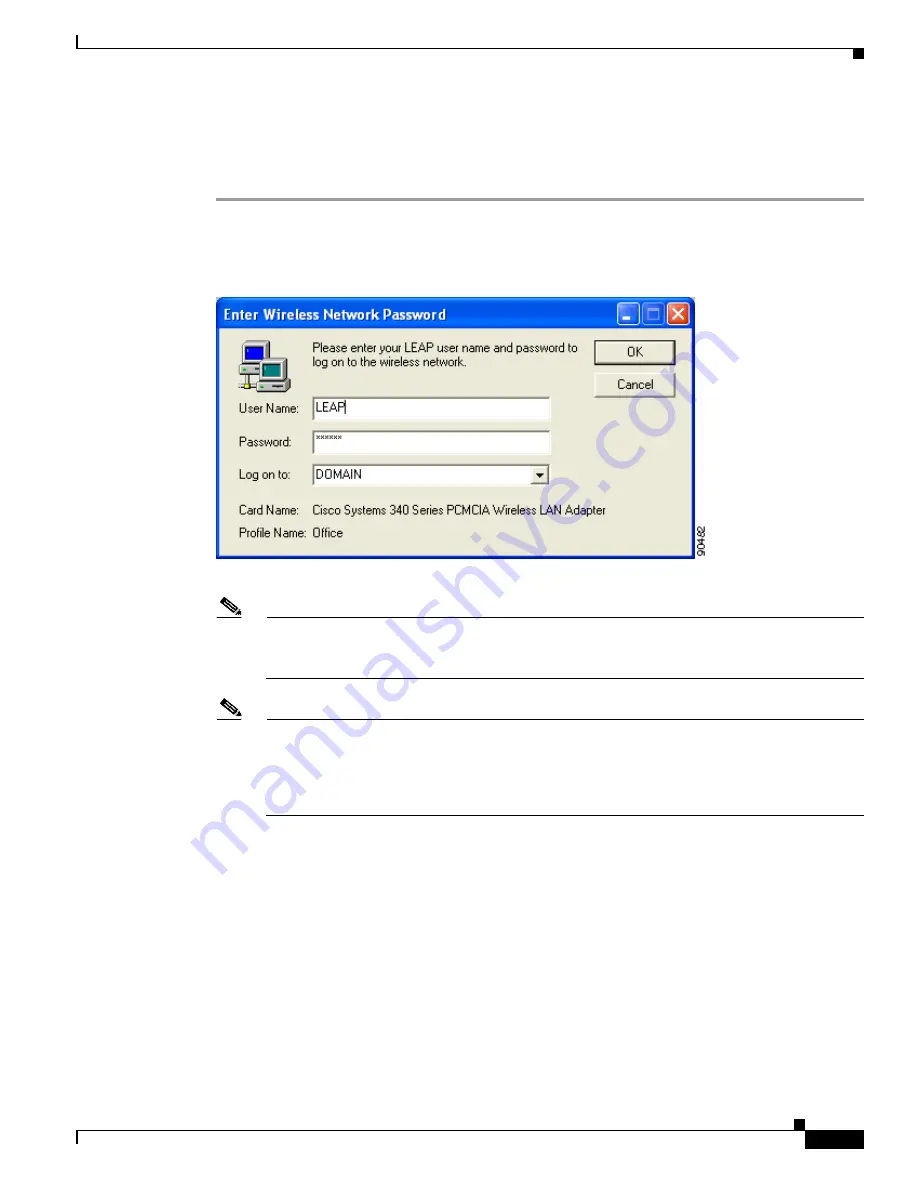
6-7
Cisco Aironet 340, 350, and CB20A Wireless LAN Client Adapters Installation and Configuration Guide for Windows
OL-1394-07
Chapter 6 Using EAP Authentication
Using LEAP with an Automatically Prompted Login
After a Reboot or Logon
After your computer reboots or you log on, follow the steps below to LEAP authenticate.
Step 1
When the LEAP login screen appears (see
Figure 6-5
), enter your LEAP username and password and
click OK. The domain name is optional.
Figure 6-5
LEAP Login Screen
Note
The LEAP login screen shown above appears on computers running Windows NT, 2000, or XP.
The LEAP login screen looks slightly different on computers running other Windows operating
systems.
Note
The LEAP login screen should appear before the Windows login screen on computers running
Windows 98, 98 SE, or Me. If the Windows screen appears first, follow the instructions in the
“LEAP Login Screen Does Not Appear Before Windows Login Screen (Windows 98, 98 SE, and
Me Only)” section on page 10-13
. On computers running Windows NT, 2000, or XP, the LEAP
login screen appears after the Windows login screen.
The LEAP Authentication Status screen appears.
Step 2
If your client adapter authenticates, the screen shows that each stage was successful and then disappears.
ACM now shows Authenticated, and the Server Based Authentication field on the ACU Status screen
shows LEAP Authenticated.
If the authentication attempt fails, an error message appears after the LEAP timeout period has expired.
Refer to the
“LEAP Authentication Error Messages” section on page 10-20
for the necessary action to
take.
Step 3
When the network login screen appears (see
Figure 6-6
and
Figure 6-7
), enter your network username
and password and click OK.






























